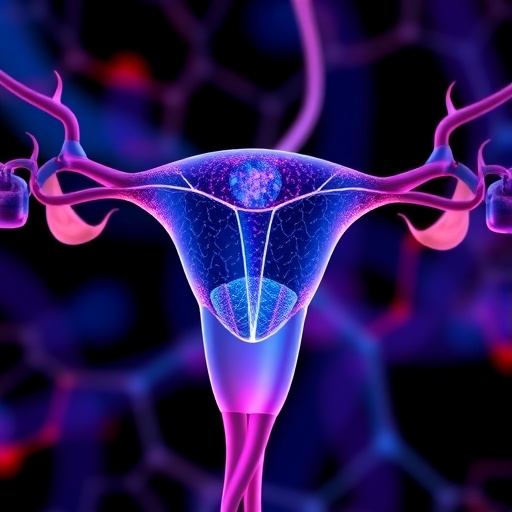In recent years, the opioid epidemic has not only devastated adult populations but has also cast a long shadow over the most vulnerable: newborns. Among these, infants diagnosed with neonatal opioid withdrawal syndrome (NOWS) represent a growing clinical challenge. Emerging research has sought to elucidate how antenatal exposure to medication for opioid use disorder (MOUD) influences neonatal outcomes. A pivotal study published in the Journal of Perinatology in 2025 by Hall, Babineau, Bangdiwala, and colleagues provides compelling insights into the associations between different MOUD types administered during pregnancy and their impact on infants afflicted with NOWS.
The study carefully analyzes data from a substantial cohort of pregnant individuals undergoing MOUD treatment, focusing on how varying pharmacologic interventions shape the trajectory of neonatal health post-delivery. MOUD, which primarily includes methadone and buprenorphine, is a cornerstone of treatment for opioid dependence and has revolutionized maternal care by reducing illicit opioid use, improving prenatal care attendance, and significantly mitigating some adverse pregnancy outcomes. However, the nuanced effect of these medications on newborns with NOWS remains an area ripe for investigation.
Hall and colleagues’ research employs a multifaceted methodological approach, incorporating clinical data, neonatal assessments, and longitudinal tracking of outcomes. Their findings indicate that antenatal exposure to MOUD correlates with distinct neonatal prognoses, contingent on the specific type of medication used. Methadone, a full opioid agonist, was traditionally the mainstay for pregnant individuals with opioid use disorder (OUD). However, buprenorphine, a partial agonist, has gained prominence due to its purported safety profile and potential to result in milder neonatal withdrawal symptoms.
One of the striking revelations of the study is that infants exposed to buprenorphine in utero generally exhibited less severe NOWS manifestations compared to their counterparts exposed to methadone. This was measured by factors such as shorter hospital stays, reduced need for pharmacologic treatment post-birth, and lower scores on standardized withdrawal assessment tools. These distinctions underscore the clinical implications of tailoring MOUD regimens during pregnancy to optimize neonatal outcomes without compromising maternal health.
Yet, the study authors caution against simplistic interpretations. While buprenorphine shows promise in minimizing NOWS severity, it is not a panacea. Some neonates in the buprenorphine group still required treatment interventions, highlighting the complexity of opioid withdrawal physiology in neonates and the influence of numerous confounding variables. These include polysubstance use, maternal metabolic differences, and socio-economic factors that collectively modulate the intensity and duration of withdrawal phenomena.
Moreover, the investigation delved into the timing and dosage of MOUD administration, elucidating that earlier initiation of treatment during the prenatal period correlates with more favorable infant outcomes. This supports the growing consensus in perinatal addiction medicine that early engagement with healthcare providers and sustained treatment adherence are crucial in attenuating the adverse effects of in utero opioid exposure.
Intriguingly, the research also comments on the neonatal growth parameters, revealing that while MOUD-exposed infants may initially present with lower birth weights and smaller head circumferences than non-exposed infants, those differences tend to diminish over time when adequate postnatal care is provided. This finding dispels some lingering myths that MOUD exposure irrevocably impairs neonatal growth, instead emphasizing the potential for catch-up development given appropriate medical and social support.
Beyond the clinical parameters, Hall et al. engage with the broader implications of their findings for healthcare policy and perinatal practice. They advocate for expanding access to MOUD programs tailored to pregnant individuals, bolstered by comprehensive prenatal care that encompasses psychosocial support and mental health resources. The goal, they argue, should be a holistic approach that addresses the interlinked biological and environmental factors contributing to NOWS.
The study also highlights gaps that future research must address, particularly the need for randomized controlled trials directly comparing methadone and buprenorphine with respect to neonatal safety profiles. There is an imperative to refine dosage guidelines and to develop predictive models that can identify which pregnancies might benefit from specific MOUD strategies. Such interventions would allow providers to preemptively mitigate NOWS severity, improving both short- and long-term developmental trajectories for affected infants.
Interestingly, this research resonates with emergent neurobiological insights into opioid receptor modulation and fetal brain development. The differential pharmacodynamics of methadone and buprenorphine may influence neural circuitry formation in distinct ways, potentially affecting neonatal neurobehavioral outcomes that extend beyond withdrawal. Therefore, ongoing longitudinal studies tracking cognitive, motor, and behavioral development into childhood are essential to comprehensively evaluate MOUD’s repercussions.
Importantly, the findings also bear ethical and societal weight. Pregnant individuals with opioid use disorder often face stigma and barriers to care, which compound the risks associated with untreated addiction and NOWS. By illuminating nuanced treatment outcomes, this study underscores the necessity of equitable healthcare models that destigmatize MOUD use in pregnancy, promote informed clinical decision-making, and advocate for the rights and dignity of these families.
The research by Hall, Babineau, Bangdiwala, and colleagues represents a significant advance in perinatal addiction medicine and neonatal care. It balances scientific rigor with compassionate clinical insight, providing a data-driven foundation to optimize maternal and neonatal health amid the complexities of opioid dependence. As the opioid crisis evolves, such evidence-based guidance is indispensable for clinicians, policymakers, and communities seeking to safeguard the health of future generations.
In conclusion, the association between antenatal MOUD exposure and neonatal outcomes in infants with NOWS is multifaceted, clinically significant, and deeply consequential. The study provides a compelling case for individualized MOUD approaches during pregnancy, prioritizes early intervention, and calls for integrated care models encompassing medical, behavioral, and social dimensions. With continued research and policy innovation, there is hope to transform the prognosis of NOWS and enhance the vitality of children born into the shadow of opioid dependency.
Subject of Research:
Antenatal exposure to medication for opioid use disorder (MOUD) and its association with neonatal outcomes in infants with neonatal opioid withdrawal syndrome (NOWS).
Article Title:
Association between medication for opioid use disorder during pregnancy and neonatal outcomes.
Article References:
Hall, R.W., Babineau, D.C., Bangdiwala, A.S. et al. Association between medication for opioid use disorder during pregnancy and neonatal outcomes. J Perinatol (2025). https://doi.org/10.1038/s41372-025-02442-7
Image Credits:
AI Generated
DOI:
https://doi.org/10.1038/s41372-025-02442-7
Tags: antenatal exposure to opioidsbuprenorphine neonatal outcomesclinical study on NOWSimplications of MOUD during pregnancylong-term effects of opioid exposure on infantsmaternal care and opioid treatmentmaternal opioid dependence treatmentmethadone effects on newbornsneonatal health researchneonatal opioid withdrawal syndromenewborn health challengesopioid use disorder medications





